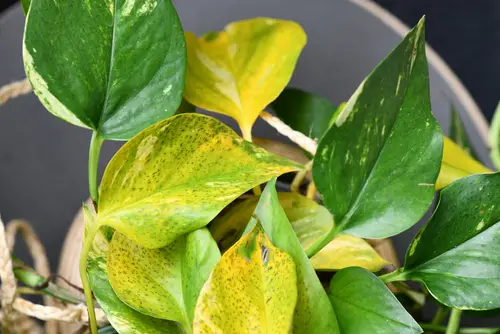Pothos plants are a popular choice for indoor gardeners due to their low maintenance and aesthetic appeal. However, brown spots on the leaves of a Pothos plant can be a cause for concern. These small brown spots can be a sign of a larger issue, such as disease or improper care.
Understanding the Pothos plant is key to identifying and addressing brown spots on its leaves. Pothos plants thrive in bright, indirect light and require well-draining soil.
Overwatering and underwatering can both lead to brown spots on the leaves. Additionally, pests such as spider mites and mealybugs can also cause brown spots on Pothos plants.
Identifying the cause of small brown spots on Pothos leaves is crucial in determining the appropriate treatment. Fungal and bacterial diseases can cause brown spots, and addressing these issues may require a specific treatment plan.
Proper care and maintenance of Pothos plants can also prevent brown spots from occurring in the first place.
Understanding Pothos Plant
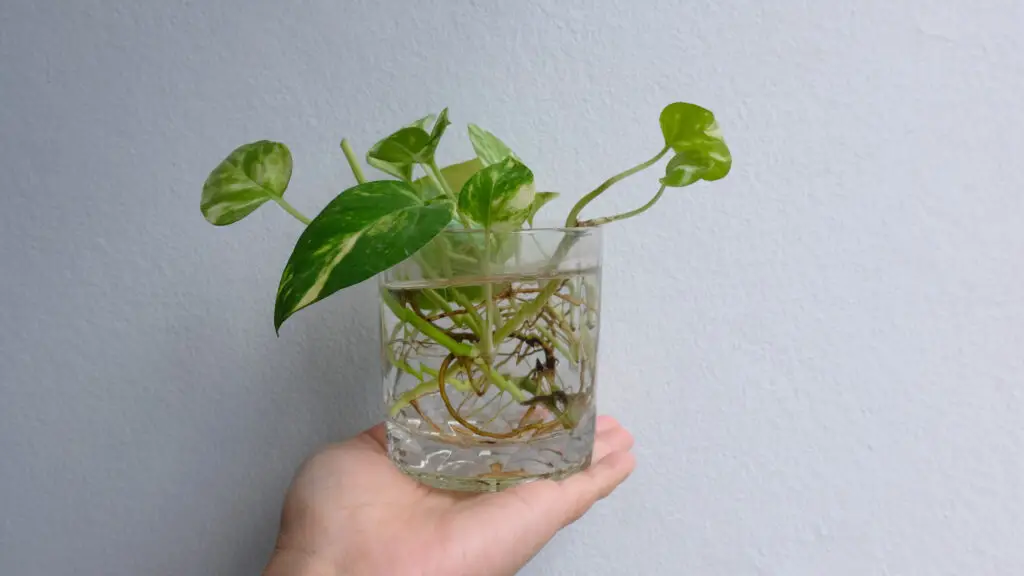
Pothos, also known as Epipremnum aureum, is a popular houseplant that is easy to care for and can thrive in various lighting conditions. Its glossy, heart-shaped leaves make it an attractive addition to any room.
Pothos plants are native to the Solomon Islands in the South Pacific and can grow up to 10 feet long in the wild. However, when grown indoors, they usually reach a maximum length of 6 feet. The plant is a member of the Araceae family, which includes other popular houseplants such as peace lilies and philodendrons.
There are several varieties of pothos plants, including the Marble Queen pothos, Manjula, and Golden pothos. The Marble Queen pothos has striking white and green variegated leaves, while the Manjula has green and silver variegated leaves.
The Golden pothos, also known as Devil’s Ivy, has bright green leaves and is one of the easiest varieties to care for.
Pothos plants are known for their air-purifying qualities, as they can remove toxins such as formaldehyde and benzene from the air. They are also low maintenance and can tolerate a range of lighting conditions, from low to bright indirect light.
When it comes to watering, pothos plants prefer to be slightly dry rather than too wet, as soggy roots can cause various issues, including root rot and development of brown spots on leaves. It is recommended to water pothos plants when the top inch of soil is dry to the touch.
Identifying Brown Spots on Pothos
Pothos plants are a popular choice for indoor gardeners due to their ease of care and attractive foliage. However, one common issue with these plants is the development of small brown spots on their leaves, which can be unsightly and concerning for plant owners.
More popular posts in this category:
- Small Brown Spots on Philodendron Leaves
- Small Brown Spots on Orchid Leaves
- Small Brown Spots on Monstera Leaves
Brown Spots and Diseases
Brown spots on pothos leaves can be caused by a variety of diseases. One common culprit is fungal leaf spot, which can be identified by small brown dots with yellow halos.
Another disease that can cause brown spots is anthracnose, which can cause brown spots with tan centers and yellow halos. In more severe cases, brown spots can be a sign of phytophthora root rot, which is caused by a waterborne fungus and can lead to the death of the plant.
Brown Spots and Pests
Pests can also be a cause of brown spots on pothos leaves. Spider mites, for example, can cause small brown dots on the leaves, which can eventually lead to the death of the plant. Mealybugs and scale insects can also cause brown spots on the leaves, as well as other damage such as yellowing and wilting.
To properly identify the cause of brown spots on pothos leaves, it is important to closely examine the affected leaves and look for any other signs of damage or stress on the plant. It may also be helpful to consult with a plant expert or refer to a reputable source for guidance on treatment options.
Small Brown Spots on Pothos Leaves – 5 Common Problems

Pothos plants are easy to care for, but they can develop brown spots on their leaves. These spots can be caused by several factors, including disease, improper care, and environmental conditions. In this section, we will discuss some of the most common causes of brown spots on pothos leaves.
1. Watering Issues
One of the most common causes of brown spots on pothos leaves is watering issues. Overwatering or underwatering can both lead to brown spots. Pothos plants prefer to be kept moist but not wet.
A good way to check if your pothos needs water is to stick your finger into the soil. If the top inch of soil feels dry, it’s time to water your plant.
2. Light and Temperature
Pothos plants prefer bright indirect light, but too much direct sunlight can cause brown spots on the leaves. Similarly, if the temperature is too high or too low, it can cause stress to the plant and lead to brown spots.
3. Humidity
Pothos plants thrive in humid environments. If the air is too dry, it can cause the leaves to dry out and develop brown spots. You can increase the humidity around your pothos by using a humidifier, placing a tray of water near the plant, or misting the leaves with water.
4. Pests and Diseases
Pests and diseases can also cause brown spots on pothos leaves. Common pests include spider mites, mealybugs, and scale insects. Bacterial leaf spot and fungal diseases like anthracnose and phytophthora root rot can also cause brown spots on the leaves.
5. Fertilizer
Using too much fertilizer or not fertilizing enough can also cause brown spots on pothos leaves. Nutrient salts can build up in the soil and cause damage to the roots, which can lead to brown spots on the leaves.
Recognizing and Treating Fungal and Bacterial Diseases
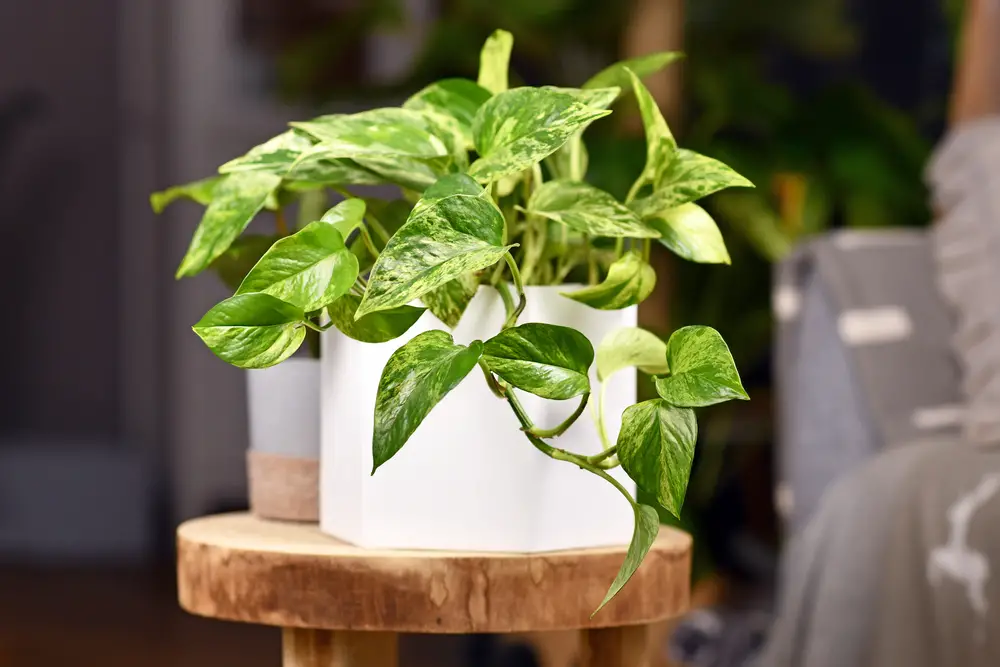
Pothos plants are susceptible to fungal and bacterial diseases that can cause small brown spots on the leaves. These diseases can be caused by a variety of pathogens, including fungi and bacteria. It is important to recognize the signs of these diseases so that they can be treated promptly.
Fungal Diseases
Fungal diseases can cause brown spots on pothos leaves. Anthracnose is a common fungal disease that affects pothos plants. It causes small brown spots on the leaves that can spread and merge together. Another fungal disease is Phytophthora root rot, which can cause brown spots on the leaves and wilting of the plant.
To treat fungal diseases, it is important to remove any infected leaves and dispose of them properly. Fungicides can also be used to treat fungal diseases. Copper-based fungicides are effective against anthracnose, while systemic fungicides can be used to treat Phytophthora root rot.
Bacterial Diseases
Bacterial diseases can also cause brown spots on pothos leaves. Bacterial leaf spot is a common disease that affects pothos plants. It causes small brown spots on the leaves that can eventually turn black and cause the leaves to drop off.
To treat bacterial diseases, it is important to remove any infected leaves and dispose of them properly. Fungicides are not effective against bacterial diseases. Instead, copper-based bactericides can be used to treat bacterial leaf spot.
It is important to prevent the spread of fungal and bacterial diseases by practicing good plant hygiene. This includes keeping the plant clean, avoiding overwatering, and providing good air circulation. If the plant is already infected, it is important to isolate it from other plants to prevent the spread of the disease.
Addressing Pest Issues
Pothos plants are susceptible to a variety of pests, including spider mites, scale insects, and mealybugs. These pests can cause small brown spots on the leaves and may also cause the leaves to curl or become distorted. It is important to address pest issues promptly to prevent further damage to the plant.
One effective way to address pest issues is to use insecticidal soap. Insecticidal soap is a safe and effective way to control pests on pothos plants. It works by suffocating the pests and can be used on a regular basis to prevent infestations.
Another option for controlling pests on pothos plants is neem oil. Neem oil is a natural insecticide that is derived from the neem tree. It works by disrupting the feeding and reproductive cycles of pests and is safe to use on pothos plants.
When using insecticidal soap or neem oil, it is important to follow the instructions carefully. Overuse of these products can damage the plant and may not be effective in controlling pests.
Regular inspection of the plant can also help to prevent pest infestations. If pests are detected early, they can be controlled before they cause significant damage to the plant.
Proper Care and Maintenance of Pothos
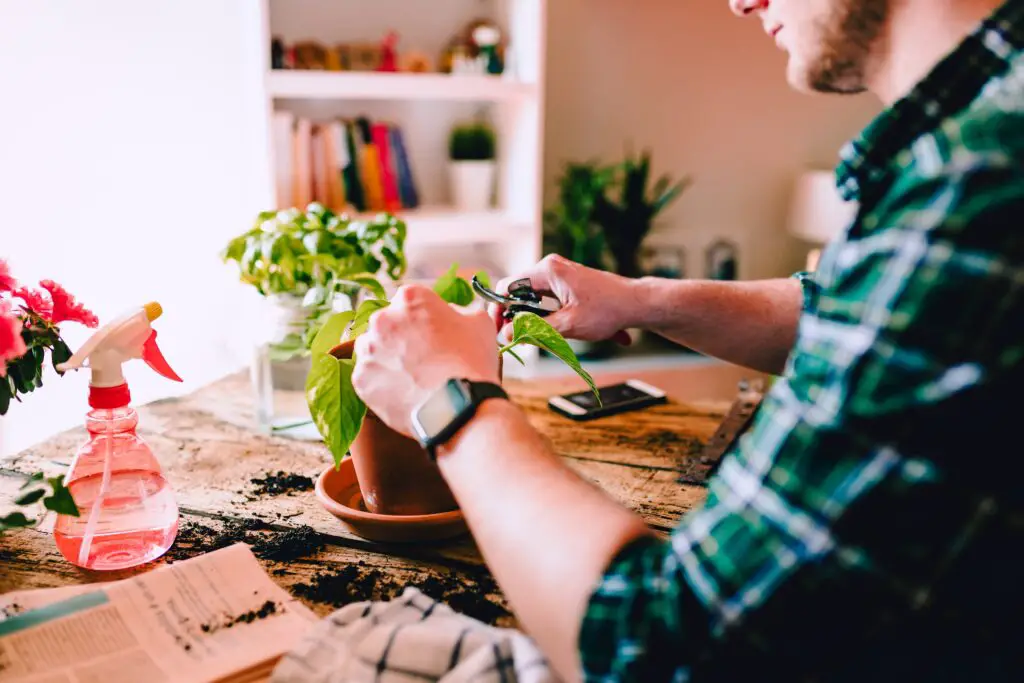
Pothos plants are hardy houseplants that can thrive with minimal care. Proper care and maintenance of pothos can help prevent small brown spots on leaves and keep the plant looking healthy.
1. Soil and Watering
Pothos plants prefer a well-draining soil mix that is rich in nutrients. A soil mix that is too heavy or retains too much water can lead to root rot and brown spots on leaves. It is important to ensure that the soil is moist but not waterlogged. Overwatering or underwatering can cause brown spots on leaves.
2. Light and Humidity
Pothos plants prefer bright indirect light, but can also tolerate low light conditions. Direct sunlight can cause brown spots on leaves, especially in hot and dry environments. Pothos plants also prefer high humidity levels, but can tolerate lower levels. Misting the leaves or placing a humidifier near the plant can help increase humidity levels.
3. Fertilizer and Nutrients
Pothos plants do not require frequent fertilization, but can benefit from occasional feeding with a balanced fertilizer. Overfertilization or using a fertilizer that is too strong can cause brown spots on leaves. It is important to follow the instructions on the fertilizer package and avoid applying fertilizer to dry soil.
4. Environment and Temperature
Pothos plants prefer a warm and stable environment with temperatures between 65-85°F (18-29°C). Sudden changes in temperature or exposure to drafts can cause stress and brown spots on leaves. It is important to keep the plant away from cold windows or air conditioning vents.
5. Water Quality and Drainage
Pothos plants are sensitive to chemicals and minerals in tap water. Using filtered or distilled water can help prevent brown spots on leaves. It is also important to ensure that the pot has drainage holes to prevent water from accumulating in the soil and causing root rot.
Proper care and maintenance of pothos plants can help prevent small brown spots on leaves and keep the plant looking healthy. Regularly checking the soil moisture, light exposure, and humidity levels can help identify and prevent potential issues.
Preventive Measures and Solutions
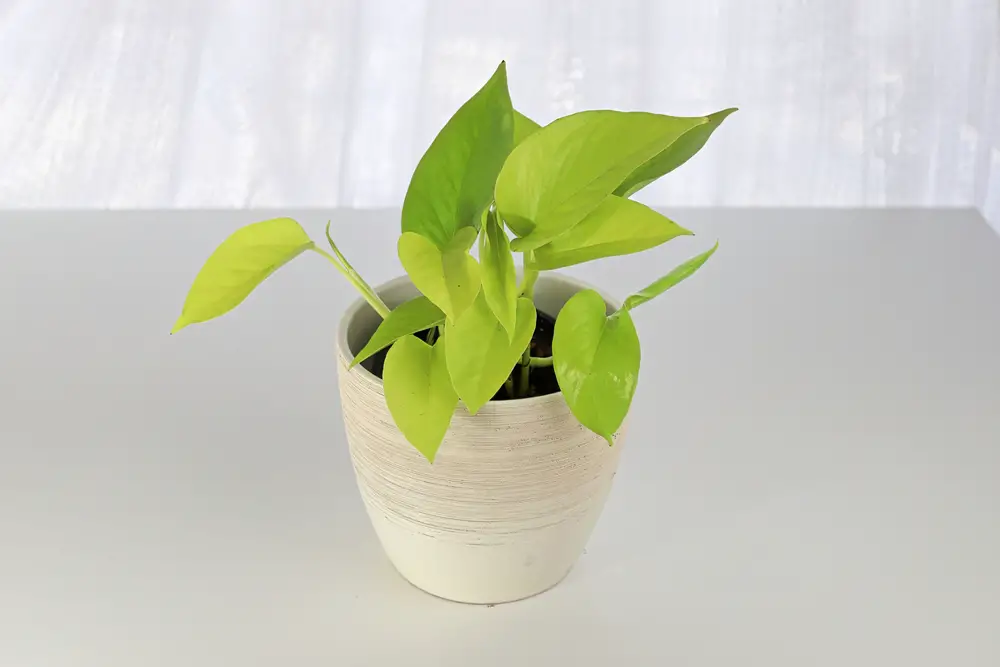
To prevent small brown spots on pothos leaves, it is important to provide the plant with the right care routines. Here are some preventive measures and solutions that can help keep your pothos plant healthy:
Soil and Watering
Pothos plants thrive in well-draining soil. Ensure that the soil is moist but not waterlogged. Overwatering can lead to mushy roots and brown leaves. To avoid this, adjust your watering schedule and use the finger test to check the soil moisture level. If the soil is still moist, wait until it dries out before watering again.
Light and Humidity
Pothos plants prefer filtered light and can tolerate low to medium light levels. Too much light can cause the leaves to turn brown. On the other hand, low humidity can cause brown spots on the leaves. Increase the ambient humidity by misting the foliage or placing a tray of water near the plant.
Fertilizer and Pruning
Over-fertilizing can cause brown spots on the leaves. Cut back on feeding and use a balanced fertilizer every 2-3 months. Prune the plant regularly to remove dead leaves and promote new growth.
Drainage Holes and Water Quality
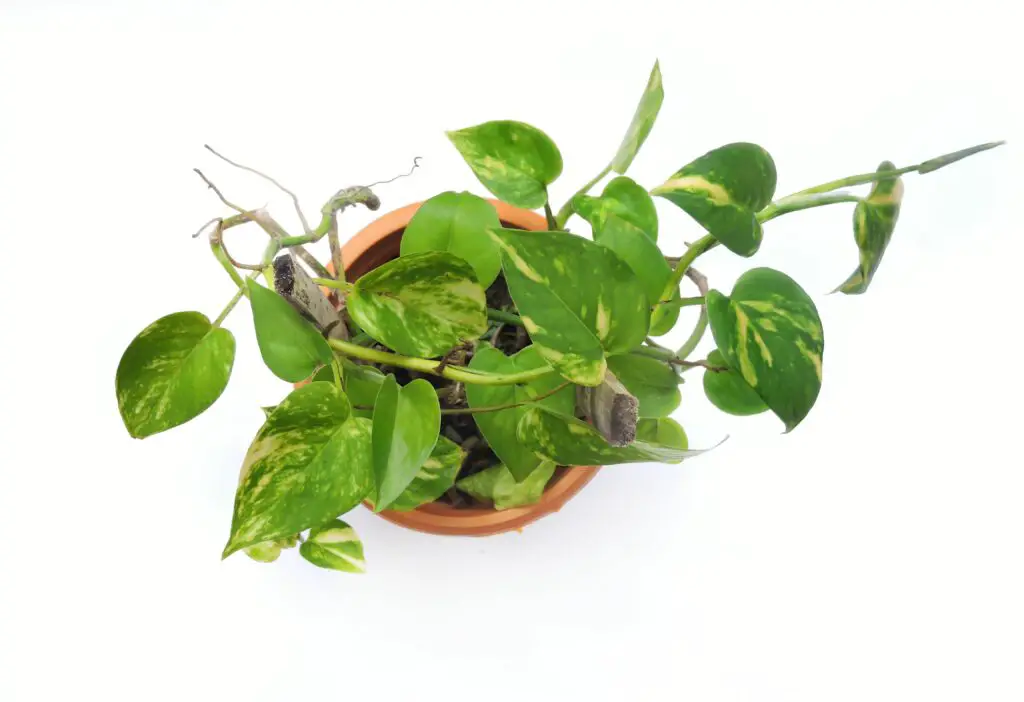
Ensure that the pot has drainage holes to prevent waterlogging. Use filtered water to avoid any water quality issues that can lead to brown spots on the leaves.
Frequently Asked Questions
What causes brown spots on Pothos leaves?
Brown spots on Pothos leaves can be caused by a variety of factors, including incorrect watering, too much or too little light, pest infestation, fungal or bacterial diseases, and improper fertilizer application. Over-fertilizing can also cause brown spots on the leaves.
How do I treat brown spots on my Pothos plant?
The treatment for brown spots on Pothos leaves depends on the underlying cause. If the brown spots are caused by incorrect watering, adjust the watering routine.
If it is due to pest infestation, use an appropriate pesticide. If it is due to fungal or bacterial diseases, use a fungicide or bactericide. If it is due to over-fertilizing, cut back on feeding.
Are brown spots on Pothos leaves a sign of disease?
Brown spots on Pothos leaves can be a sign of disease, but they can also be caused by other factors such as incorrect watering, too much or too little light, and improper fertilizer application. It is important to identify the underlying cause of the brown spots to determine the appropriate treatment.
Can brown spots on Pothos leaves be prevented?
Brown spots on Pothos leaves can be prevented by ensuring that the plant is properly watered, fertilized, and exposed to the right amount of light. It is also important to keep the plant free from pests and diseases by regularly inspecting the leaves and taking appropriate action if necessary.
What are the black spots on Pothos leaves?
Black spots on Pothos leaves can be caused by fungal or bacterial diseases such as black spot or leaf spot. These diseases can be treated with appropriate fungicides or bactericides.
Why do Pothos leaves get yellow spots?
Yellow spots on Pothos leaves can be caused by a variety of factors, including incorrect watering, too much or too little light, and pest infestation. It is important to identify the underlying cause of the yellow spots to determine the appropriate treatment.

Hey, I’m Lisa and I’ve been an avid gardener for over 30 years. I love writing, talking and living in the garden! Feel free to connect with me on my socials below

